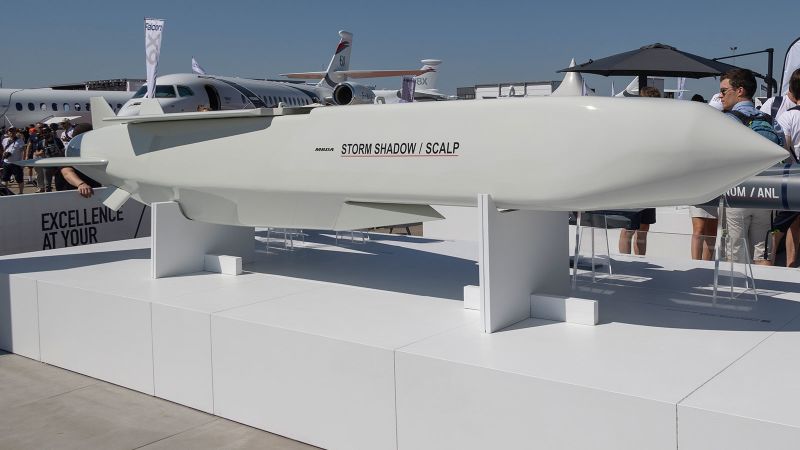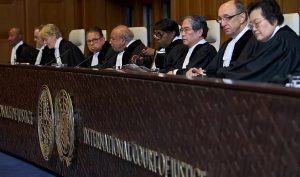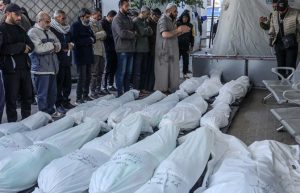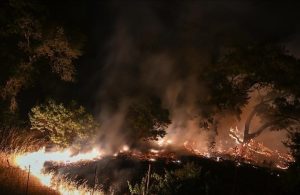Ukraine has recently used British-supplied Storm Shadow missiles to strike targets inside Russia, marking a significant escalation in the ongoing war. This development comes shortly after the Biden administration granted Ukraine permission to use U.S.-supplied Atacms missiles beyond Ukraine’s borders, triggering a sharp response from Moscow.
While Ukraine had been using both Storm Shadow and Atacms missiles for months, these weapons had been targeted solely at Russian-occupied territory in Ukraine. The decision to strike inside Russia is a major shift in Ukraine’s strategy and is seen as part of its broader effort to counter Russian military advancements.
What is Storm Shadow?
The Storm Shadow is an advanced cruise missile developed by the UK and France. It has a range of approximately 250 km (155 miles) and is launched from aircraft. The missile flies at nearly the speed of sound, hugging the terrain before descending and detonating its high-explosive warhead.
Storm Shadow is designed to penetrate heavily fortified targets like bunkers and ammunition storage facilities, making it a valuable tool for Ukraine in its conflict with Russia. However, these missiles are expensive—each costs around $1 million (about £767,000). As a result, they are typically used sparingly and in combination with cheaper drones to confuse and exhaust enemy air defenses.
Storm Shadow missiles have already proven effective in Ukraine, notably targeting Russia’s Black Sea naval headquarters in Sevastopol and making Crimea unsafe for Russian naval operations. Military analyst Justin Crump, CEO of the Sibylline consultancy, described the missile as a highly effective weapon for striking well-protected targets in occupied territory.
A Shift in Policy
For months, the UK had supplied Storm Shadow missiles to Ukraine but had restricted their use to within Ukrainian borders, mirroring the U.S. stance on long-range missile systems. However, after the U.S. greenlit the use of Atacms missiles to strike inside Russian territory, the UK followed suit and allowed Ukraine to fire Storm Shadow missiles into Russia.
This policy change signals a deeper commitment by Western allies to support Ukraine’s defense efforts, despite concerns about escalating the conflict. The UK Ministry of Defence has yet to comment on the specifics of Ukraine’s use of Storm Shadow missiles inside Russia, but the move is seen as a response to Ukraine’s increasing need for longer-range weapons to counter Russian offensives.
Why Does Ukraine Want Storm Shadow?
Ukraine’s use of Storm Shadow missiles against Russian targets is part of its broader strategy to defend key areas and retaliate against Russian attacks. Ukrainian forces are currently under constant bombardment, with Russian missiles and aircraft launching devastating strikes on Ukrainian cities, military positions, and civilian infrastructure.
Ukrainian officials have argued that they need the ability to strike at Russian airfields and logistics hubs from where these attacks are launched. Without this capability, they argue, it’s akin to fighting a war with one arm tied behind their back. By allowing Ukraine to use long-range missiles like Storm Shadow and Atacms, Ukrainian forces can target key military assets deep within Russian territory, weakening Russia’s ability to sustain its war efforts.
In addition to the direct military benefits, Storm Shadow provides Ukraine with a powerful tool to disrupt Russian military logistics and command structures, making it harder for Russia to maintain a stable front line.
How Will Storm Shadow Impact the War?
The use of Storm Shadow missiles will undoubtedly affect Russia’s military operations, though there are some caveats. Russia has already moved key military assets, including bombers and missile infrastructure, away from the border to mitigate the threat posed by these long-range weapons.
While the Institute for the Study of War (ISW) has identified around 225 Russian military sites within the missile’s range, there is skepticism about whether Storm Shadow and Atacms will be decisive. Military experts, including Crump, note that while Russian air defenses have adapted to counter these threats within Ukraine, it will be much more difficult for them to protect such a vast territory.
Moreover, the missiles could pose a dilemma for Russia regarding where to position its air defenses. This could make it easier for Ukraine’s long-range drones, which have been effective at reaching deep into Russian territory, to evade interception.
Putin’s Response
Russian President Vladimir Putin has reacted strongly to Ukraine’s use of Storm Shadow missiles, viewing it as a further escalation in the war. He has claimed that Ukrainian troops cannot operate such advanced missile systems without assistance from Western specialists. Specifically, Putin suggested that NATO servicemen must input flight missions into the missile systems and that Ukraine relies on Western satellite intelligence to identify targets.
However, military analysts like Justin Crump have cast doubt on Putin’s claims, pointing out that if this were true, Russia would have raised the issue when these weapons were first supplied. Furthermore, the Storm Shadow missile is commercially available for export, and it seems unlikely that any buyer would need NATO personnel to operate it.
Conclusion
The decision by Ukraine to use Storm Shadow missiles against Russian targets represents a significant shift in the dynamics of the conflict. These long-range missiles give Ukraine the ability to strike deep within Russian territory, targeting critical infrastructure and military assets. While there are questions about whether this will be a game-changer, the move signals continued Western support for Ukraine and a willingness to escalate military pressure on Russia. As the war continues, both sides will likely continue adapting their strategies, with the use of advanced missile systems playing a pivotal role in shaping the outcome.








